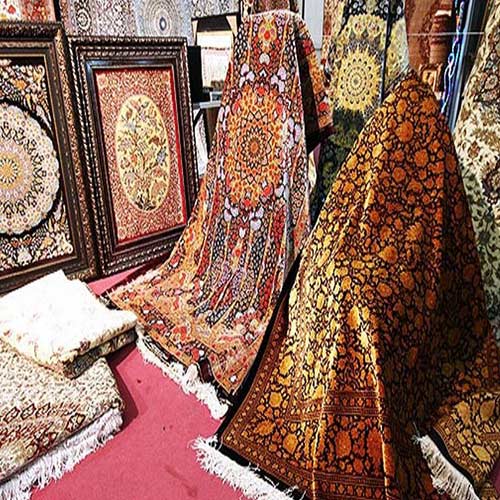Difference between Iranian and Indian handmade carpets is one of the hot topics in the carpet market today, and we will provide you with more information on this subject. The growth of carpet weaving art in India dates back to the late 16th century, when the king of India, upon returning to his country, brought the art of carpet weaving from Iran. In fact, the origin and spread of carpet weaving in India was influenced by Iran's rich culture and art. Meanwhile, the history of carpet weaving in Iran goes back to the 10th century AH. One of the most prominent differences between Iranian and Indian handmade carpets is the great variety in designs and sizes of Iranian handmade carpets. Another difference is the lower price of Indian handmade carpets, which, due to inflation, economic fluctuations in Iran's market, and the wide variety of Iranian carpet designs (which naturally require more effort and time to weave), makes Iranian handmade carpets more expensive than Indian ones. Some believe that India is a competitor to Iran in carpet weaving, but considering the quality, delicacy, and diversity of Iranian handmade carpets—and the fact that Indian carpet weaving emerged under the influence of Iranian culture and art—this theory can be completely rejected. Iran does not consider India a rival in this field. Today, Iran is one of the largest and most reputable producers and exporters of carpets worldwide.
Indian Carpet Sales
Indian carpet sales in Iran's market, due to their lower prices compared to Iranian handmade carpets, might disrupt Iranian carpet businesses. However, it is important to note the clear difference in quality and variety between Iranian and Indian carpets. Therefore, Indian carpets cannot be considered strong competitors to Iranian handmade carpets. However, due to inflation and constant price changes of goods in Iran's market, some people may choose Indian carpets based on their financial capability and by comparing the price of Iranian and Indian silk handmade carpets. Currently, Iran is one of the most successful producers and exporters of carpets in the world. Sales of Indian handmade carpets, as mentioned above, might disrupt the Iranian carpet market due to economic problems, but overall, trading and selling Indian carpets does not pose a threat to authentic Iranian handmade carpets.
Hand-tufted carpets
Hand-tufted carpets can be considered a type of semi-handmade carpet, or in other words, hand-tufted carpets fall between handmade and machine-made carpets. A tool called a tufting gun is used to weave these carpets. These carpets are suitable for various spaces such as living rooms, bedrooms, door mats, and more. Indian carpets also come in different types. Among the most well-known types of Indian carpets are hand-tufted carpets, “behtuft” carpets, and long-pile carpets. The advantages of hand-tufted carpets include affordability, and their disadvantages include the fact that they are not 100% handmade, which lowers their material and artistic value. “Behtuft” carpets are another type that can be placed between handmade and machine-made carpets, and in fact, they are categorized as semi-handmade carpets.
Technical specifications of handmade carpets
Technical specifications of handmade carpets are important aspects to consider when buying. Characteristics of an authentic handmade carpet include: slight variations of a few centimeters in different parts of the carpet (which is not a defect but a sign of authenticity and being 100% handmade), shiny and flexible piles, made from hypoallergenic natural fibers, adaptability to hot and cold weather in summer and winter, and no generation of static electricity, etc.
Best brand of handmade carpet
The best brand of handmade carpet is something you should research before purchasing a carpet. Choosing the best brand can guarantee the quality of the carpet you buy. A good quality handmade carpet has a long-lasting lifespan and retains its shine, delicacy, and quality over many years. Isfahan carpet is one of the best carpets in Iran, and Isfahan holds a high rank in the carpet weaving industry.

